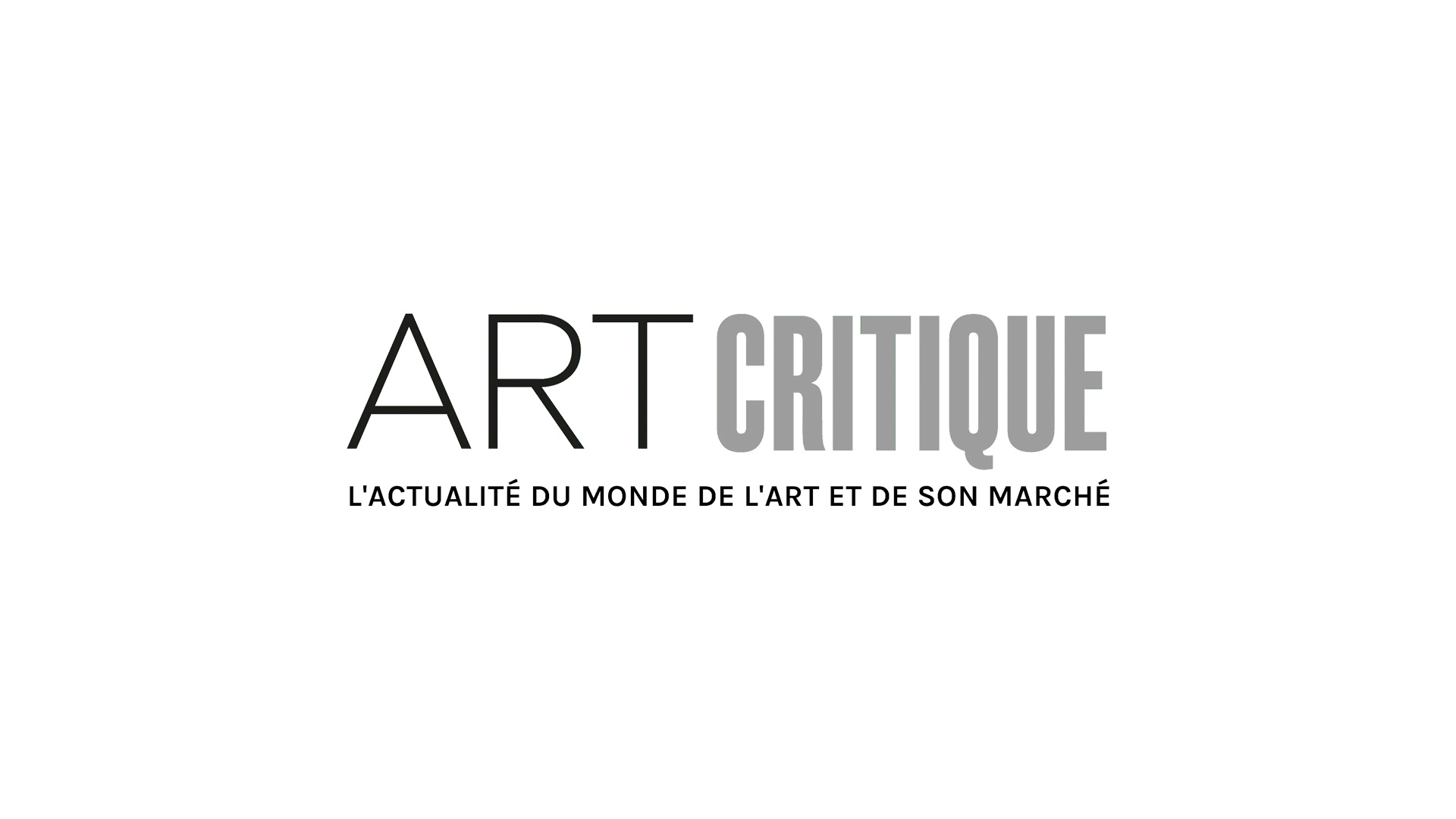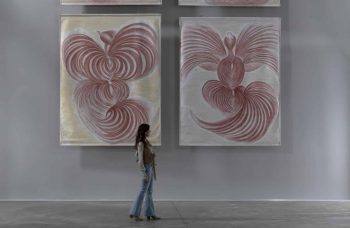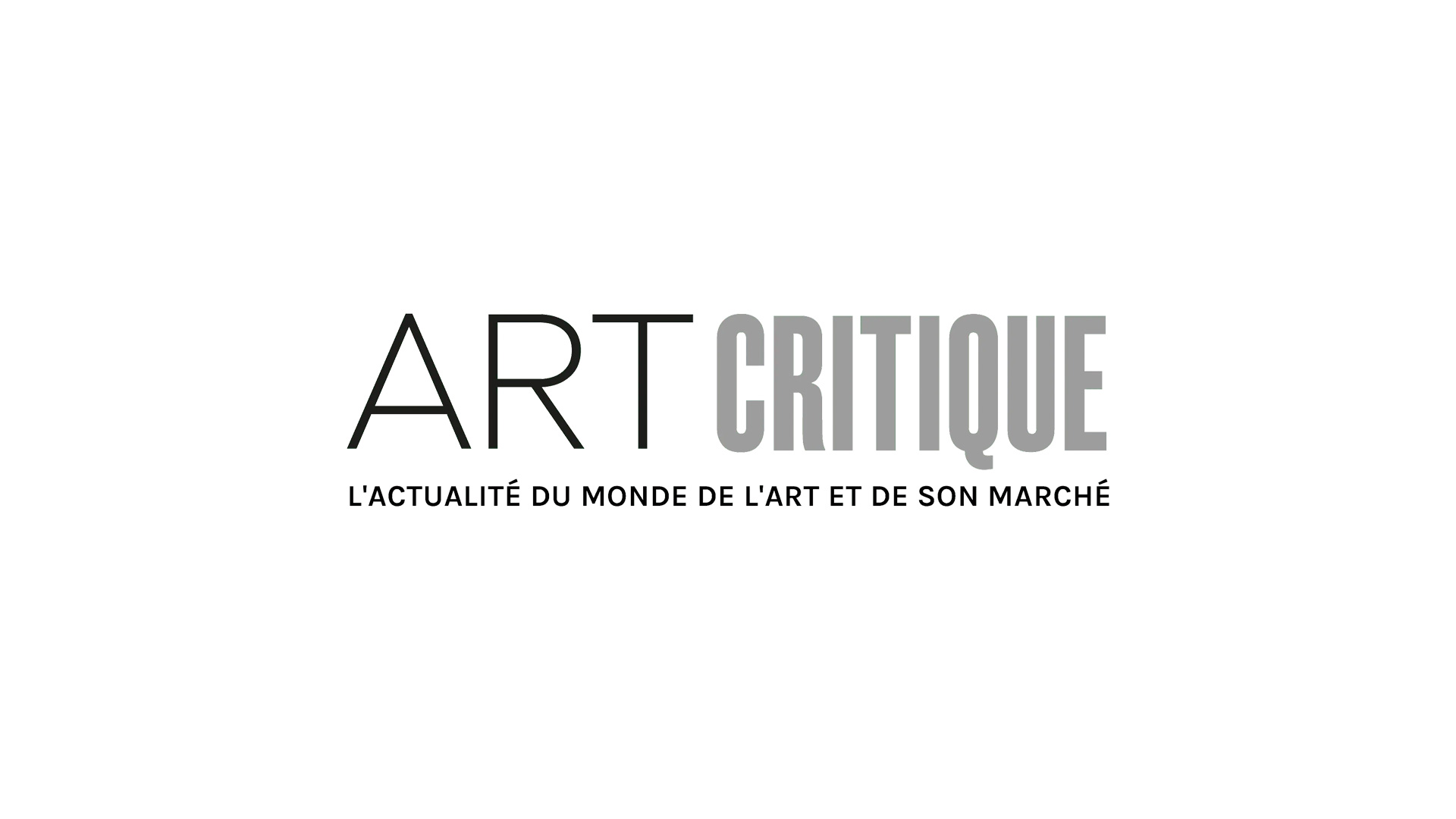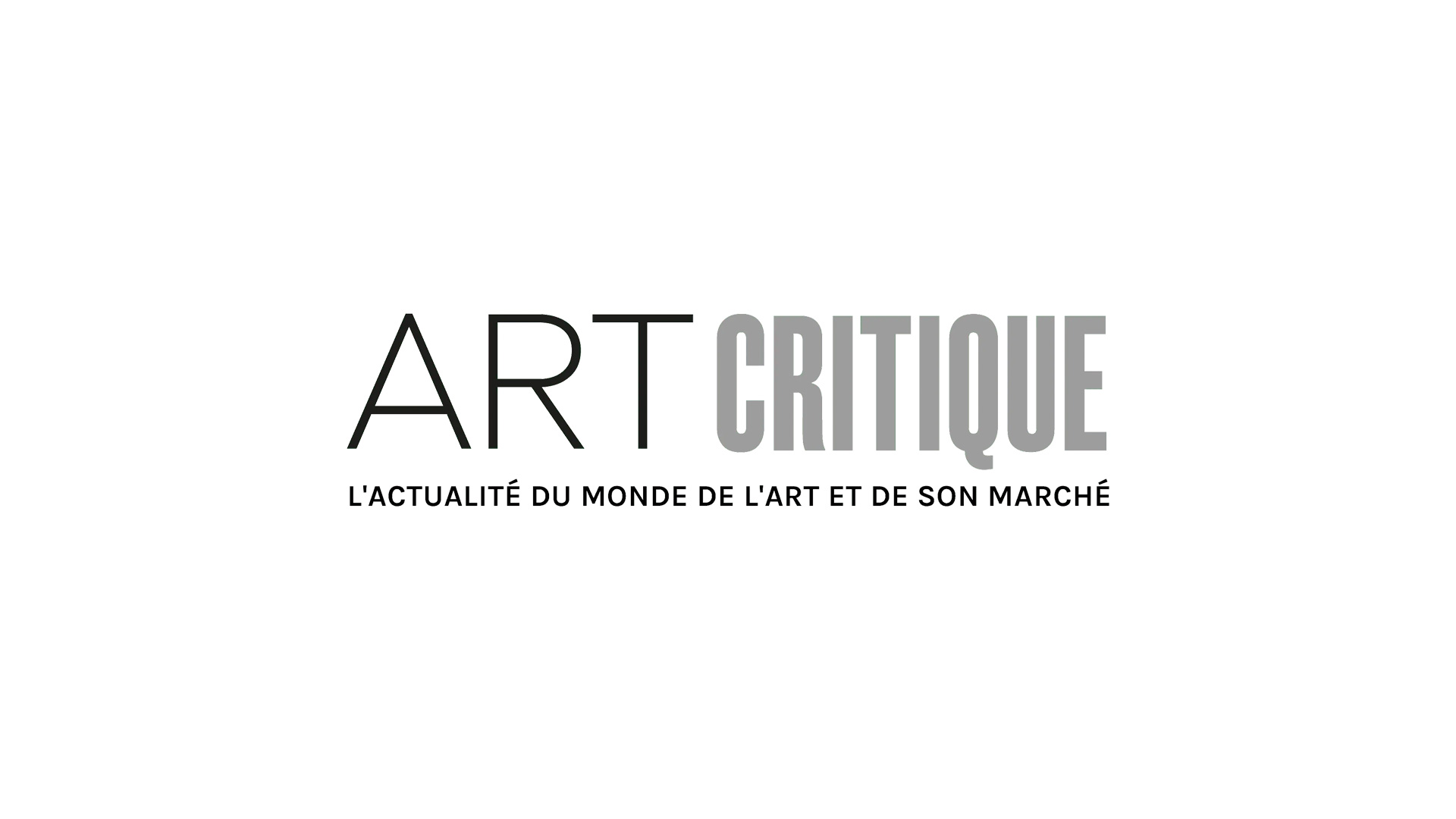In this week’s Art World Roundup: Artfizz launches new art selling and buying platform that rethinks the secondary market, dealer John Brandler snags another Banksy, and D’Lan Contemporary announces a new endowment to support Australian Indigenous artists. Meanwhile, Dolly Parton has asked that Tennessee not move forward with a statue honouring her, the CEO of the Indianapolis Museum of Art at Newfields steps down after a job listed sparks controversy and archaeologists have found Venetian beads that may have made their way to North America before Columbus.
There’s a new arts platform on the block
This week, a new platform for buying and selling art was launched that’s rethinking the secondary market. Artfizz is a “community-driven ecosystem” making the art market more accessible for those looking to buy and sell contemporary art. Through Artfizz, sellers have the ability to curate their own auctions while those looking to buy “follow their own eyes and hearts.” Perhaps most exciting about the new platform is that artists will benefit from the sale of their works. According to Artfizz, artist will receive 50 percent of the platform’s 15 percent auction fee. Also, sellers can list works by more than 20,000 pre-approved artists (a number that will increase over times) without any listing or shipping fees. From submission to final listing, the process to put an artwork on Artfizz will take less than two weeks and there are be traditional bidding options as well as “Buy It Now” features. “For many artists, navigating the highs and lows of producing work and earning money is nothing short of an endurance sport,” Executive Director and co-founder of Artfizz Matthew Dipple said in a press release. “It’s one reason we want to always factor artists into what we do at Artfizz. The first step towards that is rethinking secondary market sales. Artists should profit from the entire lifespan of an artwork. It happens in other creative industries – why not the art world?” In November of last year, Artfizz was used ahead of its launch for “Show Me the Signs,” a benefit auction that supported the African American Policy Forum’s #SayHerName Mothers Network.
View this post on Instagram
Banksy has left the building and Nottingham
The Nottingham Banksy, which popped up on the side of a Rothesay Avenue property last October has been sold to art dealer John Brandler, who’s no stranger to buying a Banksy. The mural is a black and white stencil painting of a girl using a bicycle tyre, a nod to the Raleigh Bicycle Company founded in Nottingham in 1887, as a hula hoop. The elusive street artist chained a bike missing its back tyre next to the mural adding context and a little comedy. Banksy laid claim to the work on Instagram a few days after it appeared. According to Brandler, he purchased the mural for “six-figures” before it was cut from its brick wall surroundings this week. The artwork will now head to Scotland where it will undergo restoration. Banksy has been vocal about his disapproval of the sale of his artworks and told the Nottingham rejuvenation board, the Nottingham Project, that he hoped the artwork would remain in the city. He’s not the only one sad to see the artwork head out of the Midlands city. “It’s sad to see it’s leaving. I think it should stay in the area it was put in” Alex Mitchell-Messam, who owns a shop nearby the artwork and saw it being installed, said to the BBC. “Banksy travelled to Nottingham, he chose to put that artwork here when he could have chosen anywhere. It was great, bringing new faces to the area and having a vibrant effect.” Brandler plans to include the Nottingham artwork in a forthcoming exhibition of street art later this year that will be held in Bury St Edmunds, Suffolk.
View this post on Instagram
D’Lan Contemporary establishes endowment to aid Australia’s Indigenous artists
Australian gallery D’Lan Contemporary has announced the creation of The National Endowment for Indigenous Visual Arts (NEIVA). In partnership with actor Steve Martin and businessman Bruno Raschle, both of which are avid collectors of works by Australian Indigenous artists, the NEIVA was created with the aim of supporting Indigenous arts, fostering a more transparent primary and secondary market, as well as a sustainable market for Australian Indigenous art through a central trust fund. According to D’Lan Contemporary, the NEIVA will “centralise and distribute proceeds from Australian Indigenous art sales directly back to artists, art schools that educate Indigenous artists, and the broader Indigenous communities.” At the start of 2020, D’Lan launched the Voluntary Resale Royalty Initiative, through which sellers were offered to opportunity to donate two and a half percent of sale proceeds back to Indigenous artists. Donations of up to five percent were match by D’Lan Contemporary under this initiative. With the NEIVA, all funds accumulated this way will be funneled into the endowment and D’Lan Contemporary has committed to donating between two and a half and 10 percent on future primary and secondary sales. Funds from the NEIVA will be managed by a trustee company and distributions will be guided by Indigenous visual art leaders. “Art sales are often the primary source of non-government income for remote Indigenous Australian communities. The existing primary and secondary Indigenous art market, however, does not generate sufficient revenue to support both the artists and their broader communities. We want to change this,” D’Lan Davidson, founder of D’Lan Contemporary, said in a statement. “Our intent is to develop a market for a younger generation of Australian Indigenous artists and artist estates – both here in Australia and overseas – and to help support and develop the broader Indigenous art industry and their communities at the same time,”
Dolly Parton pumps the brakes on a proposed statue of her in Tennessee
Country music legend Dolly Parton has asked that she not be honoured with a statue in her home state of Tennessee, at least not yet. As Tennessee lawmakers debated on what to do with a bust of Nathan Bedford Forrest, a Confederate general, Tennessean, slave trader, and leader of the Ku Klux Klan, held at the State Capitol, a state House of Representative suggested replacing Forrest’s statue with one of Parton. Last month, those plans gained more traction receiving bipartisan support, but this week Parton asked that they not move forward. “Given all that is going on in the world, I don’t think putting me on a pedestal is appropriate at this time,” the singer and philanthropist said in a statement in which she thanked the state’s government for its consideration. “I hope, though, that somewhere down the road several years from now or perhaps after I’m gone if you still feel I deserve it, then I’m certain I will stand proud in our great State Capitol as a grateful Tennessean.”

Director and CEO of Indianapolis museum steps down amid controversy
Following the publication of a controversial job advertisement for a position at the Indianapolis Museum of Art at Newfields, the museum’s director and CEO, Charles Venable, has stepped down. In search of a new director, the museum listed an advertisement seeking a candidate who could “attract a broader and more diverse audience while maintaining the museum’s traditional core, white art audience.” The language of the job listing was immediately condemned by members of the community and cultural workers, alike. The museum issued an apology and changed the wording of the listing to instead read “traditional core art audience.” In a February 13th interview with The New York Times, Venable admitted that explicit use of “white” was intentional. “I deeply regret that the choice of language clearly has not worked out to mirror our overall intention of building our core art audience by welcoming more people in the door,” Venable said in the interview. “We were trying to be transparent about the fact that anybody who is going to apply for this job really needs to be committed to D.E.I. efforts in all parts of the museum.” However, an open letter signed by almost 500 cultural workers and Indianapolis community members called for Venable’s immediate removal. The letter in part stated: “We will not stand for performative measures, social media apologies, disingenuous recants of statements, virtue signaling, or blame shifting to third party vendors.” On Wednesday, the museum issued a statement announcing Venable’s resignation.
Centuries old Venetian glass beat Columbus to North America
Before Columbus sailed the ocean blue, as the mnemonic goes, a handful of blue glass beads from Venice may have made their way to North America. Mike Kunz of the University of Alaska Museum of the North and Robin Mills of the Bureau of Land Management published their findings in American Antiquity after researching glass beads they’ve found in Alaska. The beads, as well as a number of metal bracelets, were discovered in three different sites – including Punyik Point, a location along trade routes from the Bering Sea to the Arctic Ocean. A plant-based twine that wrapped one of the bangles was radiocarbon dated revealing that the plant was alive sometime in the 1400s. “We almost fell over backwards” Kunz told Artnet News of when they found that out. “It was like, Wow!” Ultimately, Kunz and Mills’ research has led them to think that the beads, estimated to be around 540 years old, were brought to Punyik Point between 1440 and 1480. Some 10,000 miles from their Venetian origins, what remains a mystery is how the beads might have gotten to North America over a decade before Columbus in 1492. Kunz and Mills have theorized that the beads were likely traded between Italy and China. From there, the beads may have travelled to Russia’s eastern coast before heading to what is today Alaska.






